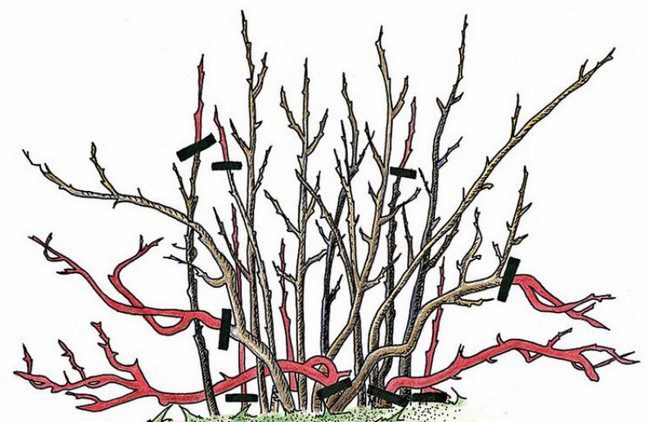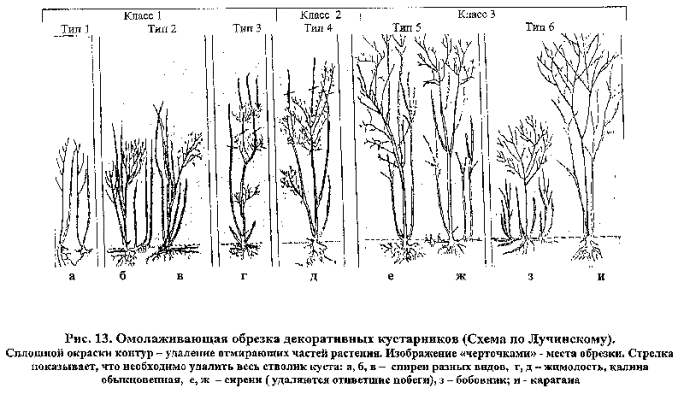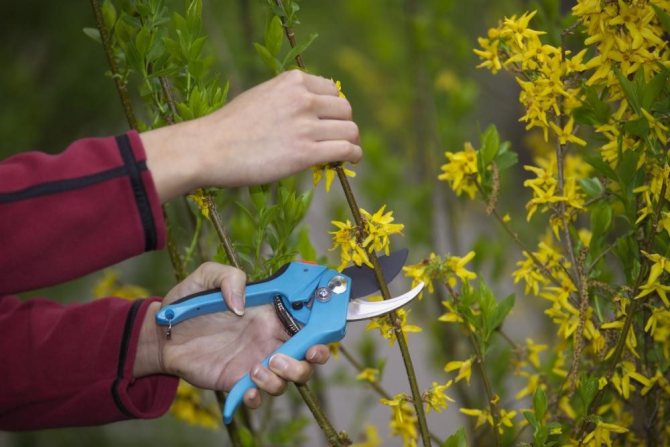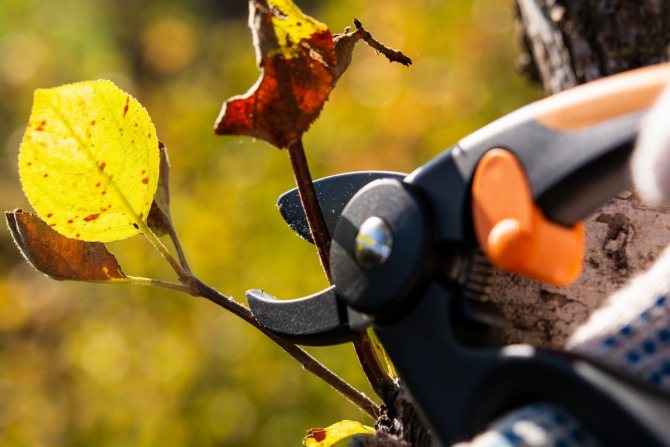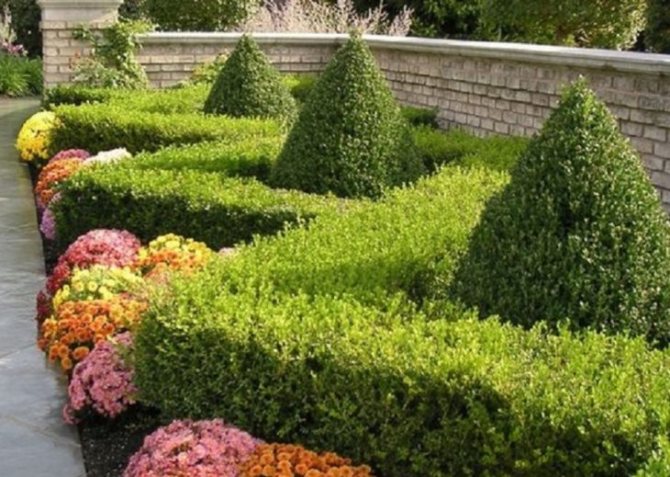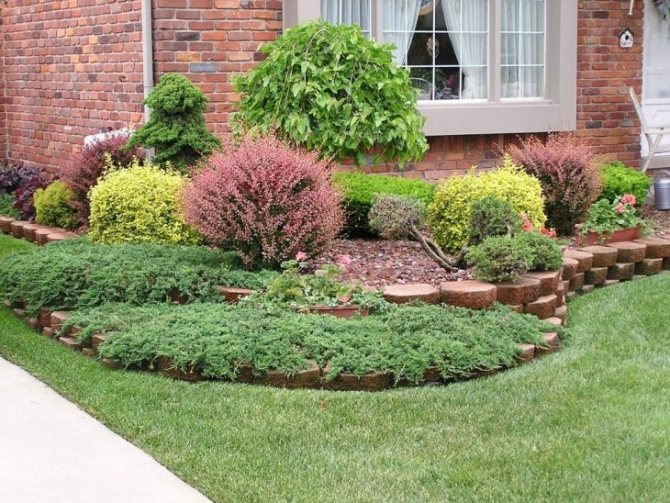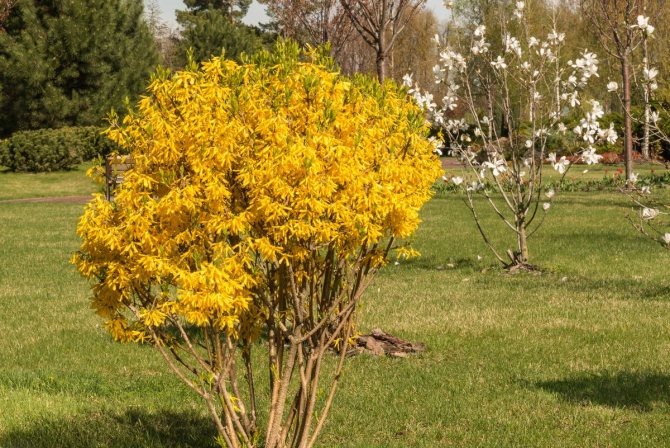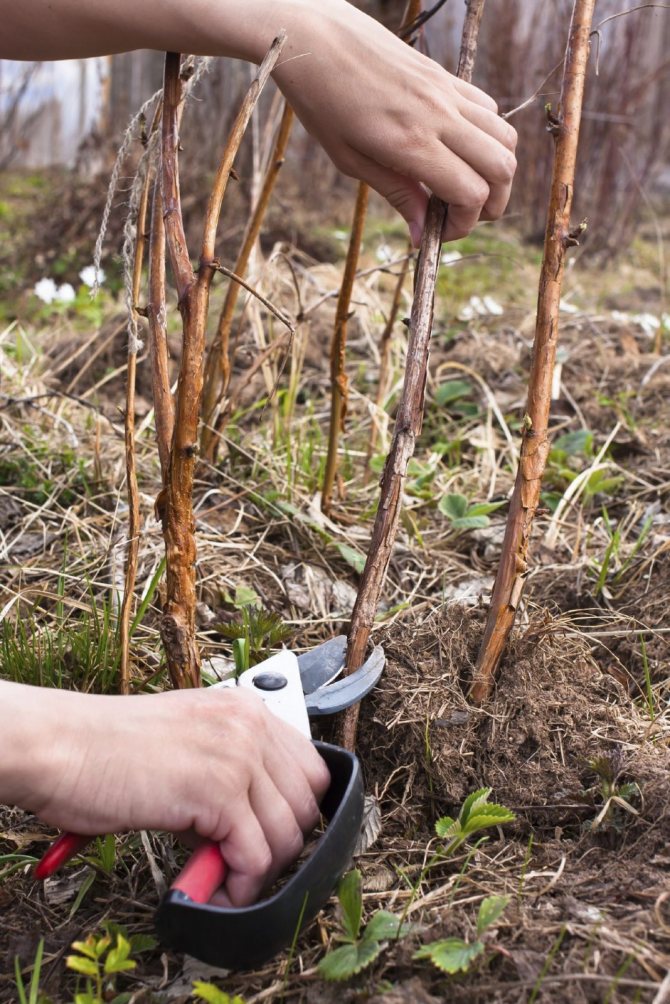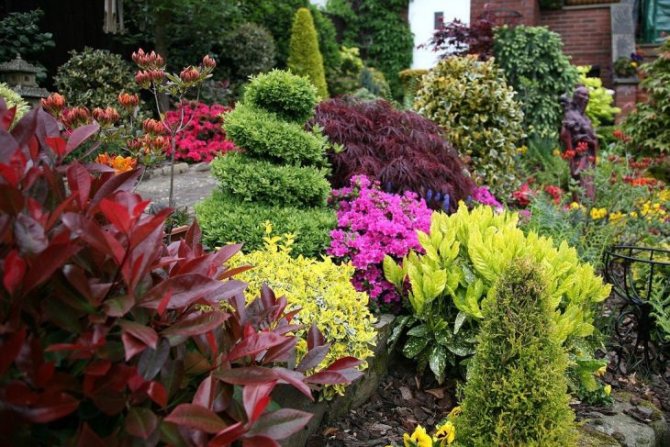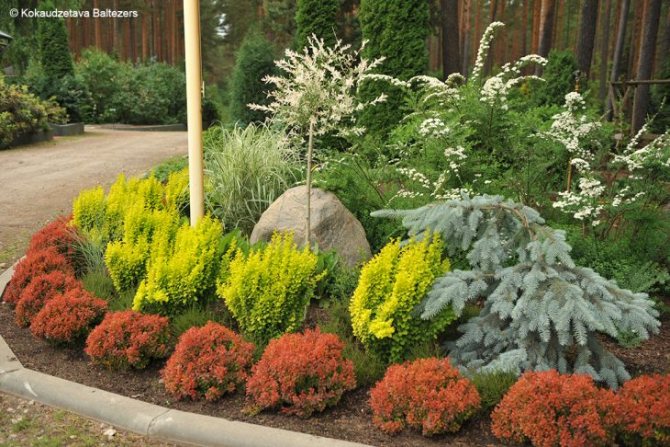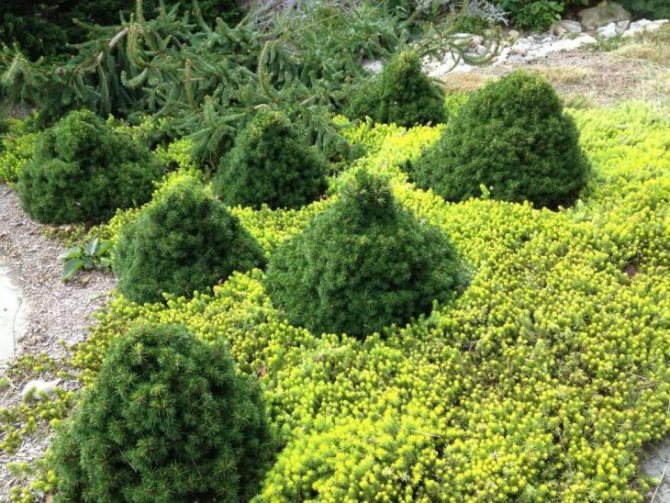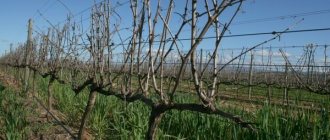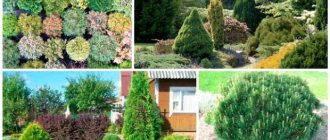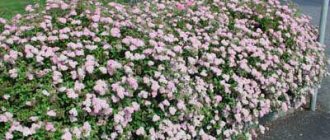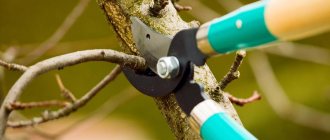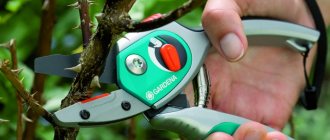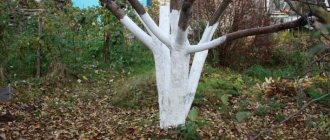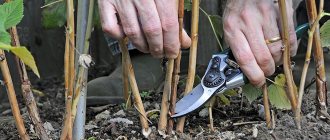Autumn is pleasant, most of the work in the garden is over - why not prune trees and shrubs? Trimming raspberries is a matter of course, you can trim currants so as not to leave this business for the spring, and most importantly, now is the right time to trim cherries and plums, which usually do not tolerate pruning in spring. So, how to properly prune trees and shrubs and how to do it?
It rarely happens that trees and shrubs do not need regular pruning shears. A haircut is necessary for a variety of reasons - for the sake of giving the crowns the desired fantasy shape or just a neat look to stimulate flowering or fruiting, or simply to remove dead and damaged shoots, to rejuvenate old bushes.
In general, every now and then in practice a situation arises when you cannot do without cutting tools.
Spire pruning (pictured)
One of the most popular shrubs is the spirea. They have a lot of advantages: they bloom beautifully, are unpretentious, frost-hardy, have many types and garden forms.
Spireas are divided into two large groups: spring and summer flowering.
The first ones bloom on the shoots of the last year, and their flowers are mostly white, collected in umbrella-shaped inflorescences. Cut off the bushes immediately after flowering, completely removing shoots older than 5 years.
If you trim a spring-flowering spirea (Wangutta, gray, nippon, etc.) in the spring, after flowering, it will give a large number of shoots, which next year will also delight you with abundant flowering.
If you cut it in the second half of summer, you will not get flowering next year. Or get so weak that it makes no sense to keep it for the sake of flowering, just for the sake of form. And these spireas are formed perfectly: if you want it with a ball, you want it with a cube.
Or you can create a beautiful curb or hedge out of them. Summer-flowering spireas (Bumalda, Japanese - ‘Little Princess’, ‘Golden Princess’, ‘Shirobana’, etc.) bloom on the shoots of the current growth. They can be cut as you like and whenever you want, they will still grow and bloom, albeit later, but will give you the decorative effect you want. The more often you prune summer spireas, the more compact, thicker and fluffier they become, but the less they will bloom. Therefore, it is better to cut the bushes after flowering or in early spring, cutting very shortly - 15-30 cm above the soil surface.
From the buds remaining on the stems, strong young shoots grow, on the tops of which, by the middle of summer, bright flowers (most often pink or red) bloom, collected in large corymbose or paniculate inflorescences.
When is the best time to prune fruit bushes
Proper pruning shapes the bush so that each branch gets both light and air for normal fruiting. Autumn pruning frees the bush from the fruit-bearing shoots and relieves the plant from the need to feed them during the dormant period. However, if for some reason you were unable to prune in October or November, transfer it to late winter or early spring - from late January to early April, when the snow melts and the air temperature has risen to at least -8 ºC. will hold out at this level for several days.
Do not prune shrubs in colder temperatures, or on a day when it snows or rains, and try to finish the procedure by the time the buds begin to bloom on the bushes.
Correct spring pruning of fruit trees in the garden
Sanitary pruning is carried out when the need arises, regardless of the season.
- Rowan: planting and care, types and varieties
Derain pruning
Derain (of the most popular - white Shpet and Elegantissima) has a good haircut at any time. You can cut it to any height and give it any shape. The main thing is to know what you want from him. If you admire the clear graphics of brightly colored shoots in the winter garden, cut it short in early spring.
During the summer, the turf will grow annual shoots up to 0.5-1 m long, which will turn into a deep red color with the onset of cold weather. If you want to have a lush bush of a beautiful shape, decorated with variegated leaves, inflorescences of cream flowers, and then white berries, then shorten the branches to the height you need.
How to do something yourself, with your own hands - home master's site
EXCELLENT TOOL FOR MASTERS AND NEEDLEWORK AND EVERYTHING FOR THE GARDEN, HOME AND COTTAGE LITERALLY GIFT - BE SURE YOURSELF. THERE ARE REVIEWS.

Ornamental shrubs very much decorate the personal plot.
Thanks to them, the garden landscape becomes more expressive, voluminous and colorful. Some shrubs achieve the maximum decorative effect during flowering, others - during the ripening of the fruits, others have a rich palette of leaves that change color depending on the season, the fourth - an elegant bark that shrilly stands out in the cold season ... But each of them can be attractive in any season, if it has a beautiful shape. And this is achieved by regular pruning.
Winter-hardy plants can be pruned at any time of the year. Unprotected - it is better to cut in the spring (with the exception of roses, which we cut to cover: they winter better under cover).
Chubushnik pruning
To get a beautiful chubushnik bush, you first need to form it correctly. For this, the seedling is cut very low, and young shoots "shoot" from its base. The next year, they leave several of the strongest and most harmoniously located. All the rest are cut out.
Since the mock-orange blooms on the lateral (shortened) shoots of last year's growths, the faded branches after flowering are removed to the strong young shoots located below.
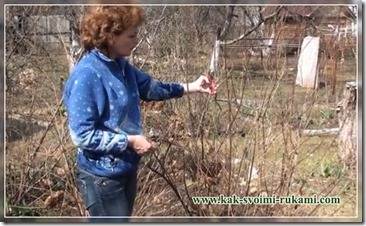

In the fall, side branches form on them, which will bloom the next year. It is also necessary to cut out old, weak and thickening branches. Make sure that the bush does not thicken and retains the shape given to it, for example, a ball. If shoots appear that are knocked out of it, they need to be cut off at an internode, which is not at the level of the ball's contour, but one below it. The shortened lateral shoots that appear will make the bush more luxuriant and bloom next year.
The old bush is rejuvenated by pruning "on a stump", it quickly grows the crown.
After rejuvenation, the chubushnik is abundantly watered and fed.
Spring pruning of perennial flowers
If you did not cut the faded stems in the fall, you can trim them after the young shoots emerge from the ground. Until then, old stems will serve as beacons so as not to accidentally weed out the plants or plant something in their place. This measure is especially relevant for those plants that come out late after winter (for example, host, platycodon).
By it's nature lavender refers to semi-shrubs, but due to external features, it is perceived by many as a beautifully flowering perennial. It is important to prune this plant every year in the spring, cutting off the tops by one third of the length, while you can also give the plant a spherical shape.
Without a haircut, the lower part of the lavender will be exposed, and the bushes will have unattractive “bare legs”. Occasionally, a more radical haircut can be arranged for lavender, but it is important not to cut off the lignified parts of the stem, since the bushes will then branch poorly.
A close relative of lavender perovskia also needs spring pruning. During the winter, the branches of this plant are almost completely frozen over, so in the spring you need to prune when the plant grows. When pruning, they leave 6-8 centimeters from the ground, but if the stem is completely frozen, then it is cut off at the soil level, and young shoots will appear from the root.
In evergreens (badan, cleanser, geyhera and others) only old leaves that have died during the winter are removed. You cannot completely cut off the bushes, this will weaken the plant or even lead to its death.
Don't throw away last year's berry leaves. The foliage of this plant, which has turned brown over the winter, can be used to prepare a delicious tonic drink called "Mongolian tea". To taste, the leaves of badan, which have undergone natural fermentation in winter, resemble refined varieties of black tea, while they do not contain tannins, but have a number of useful properties, and are indicated for certain diseases. However, the drink has a number of contraindications, so you need to consult your doctor before using it.
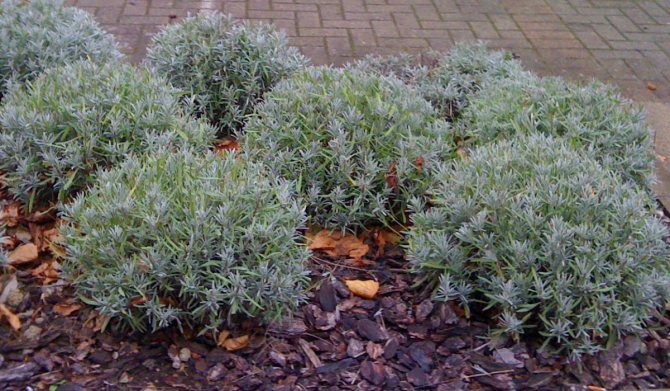

It is important to prune the lavender in the spring to give the plant a spherical shape.
Pruning hydrangea
Panicle hydrangea can withstand a fairly strong pruning. But if you cut it every year, it starts to wither. Especially if it is in shade. Therefore, you should not be zealous with panicle hydrangea. Cut off faded inflorescences in the fall. Feed with autumn fertilizer, mulch with compost or humus.
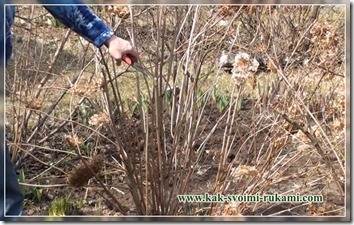

And if you need to radically rejuvenate, then it is better to do it in the spring. It is possible on the falling snow, on the already swollen buds. As with the turf, trim it internally to form a lower dome, whatever height you want. And be sure to feed with mineral fertilizer marked "spring" so that it can quickly build up its mass instead of the lost one.
The deren, in contrast to the spirea, has a rather long internode. In a spirea, wherever you cut a branch, be sure to get close to the bud, from which the shoot will then start and begin to branch. Derain is best cut at a distance of 0.5-1 cm from the knot. Then it overgrows easily and looks decorative. Otherwise, you will get a bush or hedge with dead stumps.
The same applies to other shrubs with long internodes (bladder, mock orange, etc.).
Lilac and its pruning
Lilac belongs to crops with opposite buds and long internodes. It lends itself well to rejuvenation and easily forms root shoots. The latter is one of its main problems.
If the lilac has a good main bush or bole and the root growth has gone, this root growth, which is closer to the roots, pulls on nutrients and will surely drown the bush. It will begin to give very small growths, it will bloom worse, and then it will completely stop. Therefore, it is necessary to cut out root shoots in a timely manner and mercilessly at ground level. Especially if the lilac is grafted.
If you have purchased a rooted lilac, then the growth will have the same properties as the main plant, and you can use it as a planting material.
Lilacs are grown as a bush or tree. The crown is formed at the age of 2-3 years.
To get a beautiful bush, choose several (3-5) strongest shoots directed in different directions. All others are cut into a ring. In the future, from year to year, the crown is thinned out so that it is well lit.
If you want to form a lilac tree, first of all, you need to get a trunk.Choose an even, vertical shoot, remove all unnecessary to the ground, tie it up. Then cut this trunk at the height at which you want to make a tree. For example, a lilac needs a bole with a height of 1 m - cut it off by a meter. After that, new shoots begin to go. Cut these shoots into 3-4 buds.
The stem must not only be tied up so that it does not bend, but also one or two thin shoots with leaves should be left below as thickening shoots. However, they need to be pruned all the time, not allowed to grow into whips: they grew into two pairs of leaves - they were cut off, for two more pairs - they were cut off again. As a result, there is an accumulation of sugars due to photosynthesis, the stem thickens much better than without shoots.
Thickening shoots are a general rule not only for lilacs, but also for other plants, including apples and pears.
If the lilac is thickened, neglected, with weak growths and flowering, the most correct thing is to prune it in stages. In the first year, on one side of the bush, cut off half of the branches (5-7) to a height of 0.5-1 m. It is better to be higher in the middle, close to the dome-shaped form. On this side of the bush, new powerful shoots about a meter long "shoot" (the plant is trying to restore what was lost). On the untouched side of the bush, the growth is small - only two centimeters, but flowering continues here.
The next year, cut the second part of the bush by the same 0.5-1 m.
On the first part of the bush, new shoots can be shortened by 3-4 pairs of buds (approximately leave 20-30 cm). They begin to branch again, and the second cut off part branches out the first time. Flowering will be next year or in another year, but in general, the shape of the bush remains.
It is better to rejuvenate lilacs in the spring, in the fall we only remove diseased shoots.
Plants for hedges
Such forms have to be constantly cut and shaped 2-3 times a season in accordance with their purpose. In the early years of the formation of the hedge, it is very important to achieve good branching from the base of the bush and then continue the formation along the entire length, making sure that there are no voids and the haircut is uniform. Particular attention should be paid in the first 2 years after planting. Initial pruning is very important for any hedge as the growth must be evenly distributed at the base and top. For this, the plant must be shortened by about 1/3 immediately after planting. This not only stimulates the development of a dense, dense crown, but also helps the individual plants grow into each other to form a single array. From mid to late summer, excessively long branches should be removed as new shoots develop. You also need to prune off shoots growing at right angles to the hedge to create a dense, regular crown. You can also use a brightly colored rope as a guide to trim the top of your hedge. Always cut from the base to the top of the hedge so that the clippings do not get stuck in the branches. Use a template to create specific effects (oval). Aim for the hedge to be the same width from base to top, or, preferably, narrower at the top than at the base. This slope, or bevel, has some practical advantages as well as an attractive appearance. Sloped sides not only make the fence easier to trim, but they also expose the full surface of the fence to sunlight, which helps it grow well.
Garden, vegetable garden and flower garden tips
Autumn pruning of fruit trees and shrubs in the fall in the Moscow region
Autumn pruning of fruit trees and shrubs in the fall in the Urals
Autumn pruning of fruit trees and shrubs in the fall
Timely and regular pruning of shrubs is a guarantee of health, lush flowering and abundant fruiting. Don't be lazy and don't miss the obligatory pruning at least twice a year.
Types of pruning
All types of autumn pruning are conventionally divided into two groups: sanitary and formative... Another view - rejuvenating, performs both functions both to heal the bush and to give it the desired shape. The decorativeness, appearance and intensity of flowering of the garden in the next season depends on the quality and timeliness of the work carried out.
Autumn formative pruning is not permissible for all bushes, but only for summer flowering ones. Having cut off spring-flowering plants in the fall, there is a risk of getting a minimum of decorative effect from shrubs in the spring, since they bloom on last year's shoots. This type includes:
- forsythia;
- chubushnik;
- large-leaved hydrangea;
- heenomeles (Japanese quince);
- weigela;
- bladderworm;
- three-lobed almonds;
- lilac;
- all white-flowering varieties of spirea (Vangutta, ash, Nipponskaya, Arguta, Thunberg, etc.);
- barberry Thunberg;
- action;
- bean (steppe almond), etc.
These types of shrubs are subjected to sanitary and rejuvenating pruning in the fall, but in no case are they formed. When rejuvenating such bushes, branches older than five years of age are removed and only those shoots that clearly thicken the bush.
It will be useful to read:
Sanitary pruning
In autumn, sanitary pruning is carried out for all shrubs without exception. It involves removing damaged, broken, unripe branches and those growing inside the bush to provide aeration (ventilation) of the crown. It is carried out in order to exclude the possibility of the development of various kinds of infections and the formation of foci of rot on dry residues. Unripe shoots are cut to the barked part of the branch, capturing it, with the remainder of 2 centimeters above the bud.
Rejuvenating pruning consists in removing old, gnarled branches, thinning thickened crowns, removing dry inflorescences and is carried out in the fall also for all types of shrubs.
Shrubs like chubushnik and lilac, require regular removal of faded twigs. If this is not done in the summer, then it must be removed in the fall. Dry inflorescences will inhibit the development of new flower shoots, the brushes become short, loose, the bushes look sloppy. In addition, all diseased and broken branches are removed. Old branches, older than four years, are either completely cut out or shortened to the extreme one-year shoot.
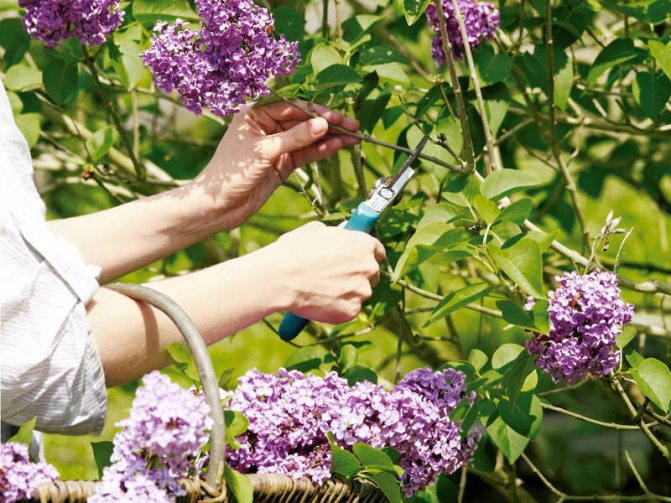

Henomeles (Japanese quince), chokeberry (chokeberry) and barberry not only very ornamental shrubs, but also fruiting. Therefore, after harvesting, they need enhanced August feeding. Rejuvenation and sanitary pruning on them is carried out no earlier than a month later. In no case should you shorten the first-year branches. This type of shrub forms fruit on the shoots of the last year, therefore, by shortening them, you can lose not only flowering, but also the harvest. If you need to somehow correct the crown, you will have to wait until summer.
Tool for pruning ornamental shrubs in the fall
The hedge trimmer is a versatile garden tool that can be conveniently used both for trimming bushes and for processing garden trees, green hedges and removing thickets in areas. The versatility of the hedge trimmer is not its only strength. This tool has many advantages over the same pruning shears or pruning shears. The main ones are:
- A wide range of types of tools. Each type is intended for certain types of work. There are also versatile models that can perform a wide variety of tasks.
- Brush cutters can more efficiently perform all tasks assigned to the pruner. The only exception is the trimmer - it does not work with branches over 5 mm thick.
- The tool is easy to use. The wavy structure of the knives helps keep the branches between them and prevents them from slipping out.This eliminates the need to hold onto branches with your other hand while pruning.
- Powerful models can handle small trees up to 30 mm thick
A quality tool must meet certain requirements:
- the cut on the branches should be perfectly even, clean and not have torn edges, as this can lead to disease of the whole plant;
- pruning must be done with a minimum of effort;
- the tool should serve for a long time.
These simple requirements apply to all types of clippers, regardless of their classification.
Lopper - a special pruner with a long handle, It is necessary for removing long large branches in hard-to-reach areas of the crown.
Putties are special means for protecting sections from infection and drying out.
If the pruning is done on time, the location in the garden is right, the plant is planted correctly, watered on time, generously fed, weeds are removed and the soil is mulched, then the desired impeccable appearance and abundant flowering of your plants will be obtained.
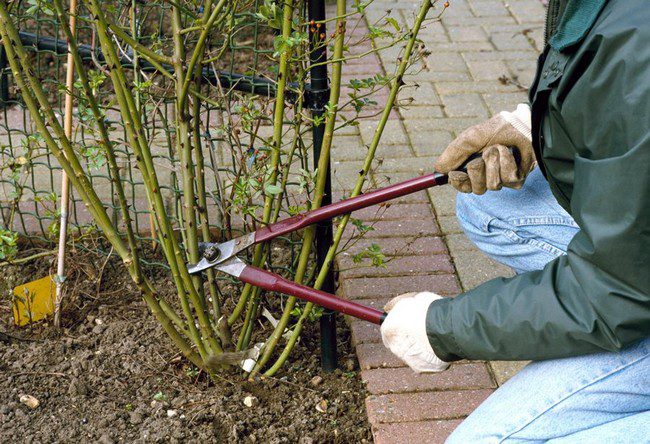

Types of trimming
All types of autumn pruning are conventionally divided into two groups: sanitary and formative... Another view - rejuvenating, performs both functions both to heal the bush and to give it the desired shape. The decorativeness, appearance and intensity of flowering of the garden in the next season depends on the quality and timeliness of the work carried out.
Autumn formative pruning is not permissible for all bushes, but only for summer flowering ones. Having cut off spring-flowering plants in the fall, there is a risk of getting a minimum of decorative effect from shrubs in the spring, since they bloom on last year's shoots. This type includes:
- forsythia;
- chubushnik;
- large-leaved hydrangea;
- heenomeles (Japanese quince);
- weigela;
- bladderworm;
- three-lobed almonds;
- lilac;
- all white-flowering varieties of spirea (Vangutta, ash, Nipponskaya, Arguta, Thunberg, etc.);
- barberry Thunberg;
- action;
- bean (steppe almond), etc.
These types of shrubs are subjected to sanitary and rejuvenating pruning in the fall, but in no case are they formed. When rejuvenating such bushes, branches older than five years of age are removed and only those shoots that clearly thicken the bush.
It will be useful to read:
Sanitary pruning
In autumn, sanitary pruning is carried out for all shrubs without exception. It involves removing damaged, broken, unripe branches and those growing inside the bush to provide aeration (ventilation) of the crown. It is carried out in order to exclude the possibility of the development of various kinds of infections and the formation of foci of rot on dry residues. Unripe shoots are cut to the barked part of the branch, capturing it, with the remainder of 2 centimeters above the bud.
Rejuvenating pruning consists in removing old, gnarled branches, thinning thickened crowns, removing dry inflorescences and is carried out in the fall also for all types of shrubs.
Shrubs like chubushnik and lilac, require regular removal of faded twigs. If this is not done in the summer, then it must be removed in the fall. Dry inflorescences will inhibit the development of new flower shoots, the brushes become short, loose, the bushes look sloppy. In addition, all diseased and broken branches are removed. Old branches, older than four years, are either completely cut out or shortened to the extreme one-year shoot.
Henomeles (Japanese quince), chokeberry (chokeberry) and barberry not only very ornamental shrubs, but also fruiting. Therefore, after harvesting, they need enhanced August feeding. Rejuvenation and sanitary pruning on them is carried out no earlier than a month later. In no case should you shorten the first-year branches.This type of shrub forms fruit on the shoots of the last year, therefore, by shortening them, you can lose not only flowering, but also the harvest. If you need to somehow correct the crown, you will have to wait until summer.
Large-leaved hydrangea requires special attention to itself. This capricious beauty does not like haircuts very much, lays flower buds in August on a one-year growth. It is not necessary to cut and shorten anything on it, with the exception of broken off, frankly weak, immature and thin shoots. It is possible to cut a hydrangea only as a last resort, and then in the summer, when the flowering stops. Although, as a rule, there is no need for this: it forms a neat, rounded bush and looks great without outside interference.
Weigela - a rather specific shrub. Repaired flowering, which distinguishes it from many spring flowering shrubs, requires repeated pruning. After the first wave of flowering, all the remnants of the inflorescences must be removed, thereby provoking an intensive regrowth of new shoots, which in most cases bloom again by the end of summer. Flowering lasts until September-October, depending on temperature conditions. Consequently, it becomes necessary to re-remove the faded branches, so as not to restrain the formation of new peduncles in the spring. You can find out more about this elegant shrub here.
Pruning black currants in spring
Pruning blackcurrant branches is somewhat more difficult than pruning raspberries, since the bush is made up of branches of different ages, and each branch can actively bear fruit for up to five years. Cut black currants according to the following scheme:
- the number of old branches cut out annually should be equal to the number of new branches left from the root growth: we cut out 3-5 old branches, they should be replaced by 3-5 new branches;
- every year it is necessary to cut out those branches whose age has reached five years;
- when removing old and unnecessary new branches, make sure that the remaining branches do not interfere with each other, do not cross, do not lie on the ground and are conveniently located.
